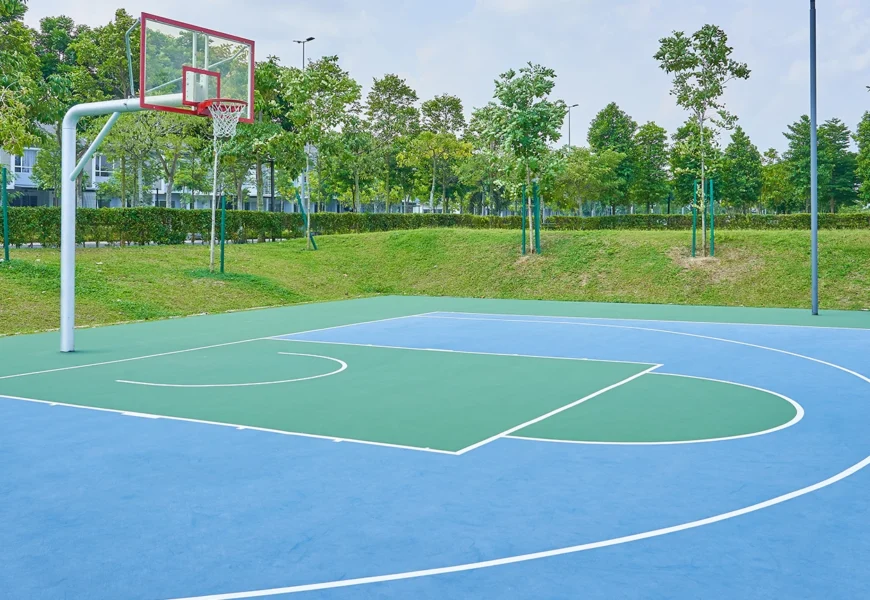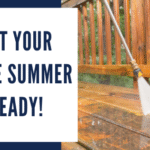An outdoor court is a fantastic addition to any property, offering a dedicated space for fitness, recreation, and family fun. A critical decision in the planning process is selecting the right surface. The material you choose will directly impact performance, safety, maintenance, and the overall longevity of your court. Understanding the distinct characteristics of each option is key to making an informed choice that meets your specific needs.
Key Factors to Consider Before You Choose
Before diving into the types of surfaces, it’s important to evaluate a few key factors. Your answers will help guide you toward the best material for your court.
Primary Use of the Court
What sports will be played most often? A court designed for basketball has different performance requirements than one for tennis or pickleball. The bounce of the ball, foot traction, and player comfort vary significantly between surfaces. A multi-sport court will require a versatile material that can accommodate various activities.
Budget and Long-Term Costs
Your initial budget is a major consideration, but it is equally important to think about long-term expenses. Some surfaces have a lower upfront cost but may require more frequent maintenance or repairs over time. Others might be a larger initial investment but offer greater durability and lower upkeep costs, providing better value in the long run.
Climate and Weather Conditions
The local climate will play a huge role in how your court surface performs and ages. Extreme heat, heavy rainfall, and freeze-thaw cycles can all affect different materials. Choose a surface that is known to withstand the specific weather patterns in your area to prevent premature cracking, fading, or warping.
Common Types of Outdoor Court Surfaces
Each surface material offers a unique combination of playability, durability, and aesthetic appeal. Here’s a breakdown of the most popular options.
Concrete
Concrete is a widely used and traditional choice for outdoor courts, valued for its durability and relatively low initial cost. It provides a consistent ball bounce, making it suitable for sports like basketball. However, concrete is a very hard surface, which can be tough on players’ joints. It is also prone to cracking over time, especially in areas with significant temperature fluctuations.
Asphalt
Similar to concrete, asphalt is a popular and cost-effective option. It is typically softer than concrete, offering slightly more cushioning for players. Asphalt courts are durable but require a protective acrylic topcoat to create a smooth, colored playing surface and shield it from the elements. Without proper sealing and maintenance, asphalt can deteriorate and need repairs. Regular upkeep and occasional professional work, like tennis court resurfacing in Utah, can be necessary to maintain its condition.
Acrylic-Coated Surfaces
This is one of the most common choices for tennis, pickleball, and multi-sport courts. The system involves applying multiple layers of acrylic resurfacer, paint, and cushioning over a base of asphalt or concrete. These surfaces offer excellent traction, predictable ball response, and vibrant, customizable colors. You can also opt for cushioned acrylic layers, which provide significant shock absorption to reduce stress on players’ bodies.
Modular Interlocking Tiles
Modular tiles are a modern and versatile solution. Made from high-impact polypropylene, these tiles snap together over a hard, flat sub-base like concrete. They are engineered to provide excellent drainage, making them playable soon after rain. The suspended design also offers superior shock absorption, enhancing player safety and comfort. While the initial cost can be higher, these tiles are extremely durable, require minimal maintenance, and individual tiles can be easily replaced if damaged.
Making the Right Investment for Your Court
Choosing the right surface is a foundational decision that will define your playing experience for years to come. By carefully considering your primary activities, budget, and local climate, you can select a material that provides the ideal balance of performance, safety, and durability.
A well-built court is a long-term asset. Taking the time to research your options and consult with professionals will ensure you make a choice you’ll be happy with for countless games and seasons.






